Genus species:
Anas strepera
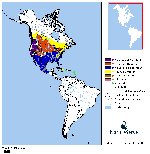
Enlarge Map
External Sites:
Cornell
USGS
Image Search
Number of Individuals Observed:2
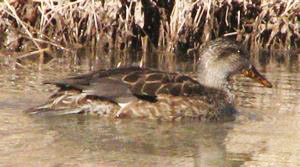
Bosque del Apache
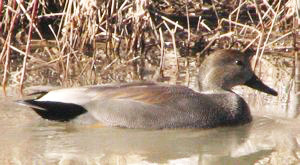
Bosque del Apache
Anas platyrhynchos
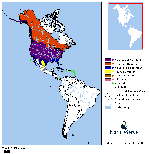
Enlarge Map
External Sites:
Cornell
USGS
Image Search
and
Male (below).
Male plumage distinctive.
Number of Individuals Observed:18

Rinconada
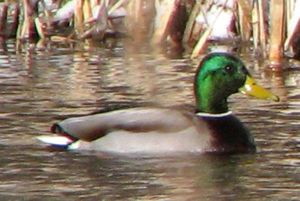
Rinconada

Rio Grande-Taos County Line, June 9, 2014 Enlarge
Mergus merganser
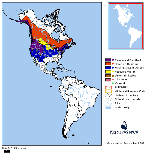
Enlarge Map
External Sites:
Cornell
USGS
Image Search
Male has dark head.
Female reddish-brown head.
Number of Individuals Observed:1
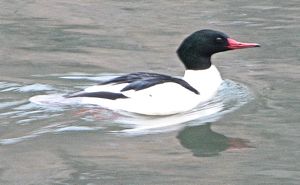
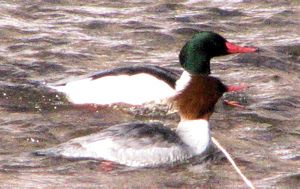
Ardea herodias
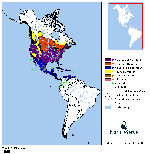
Enlarge Map
External Sites:
Cornell
USGS
Image Search
Large, often standing in water.
In flight: 72" wingspan.
Number of Individuals Observed:1
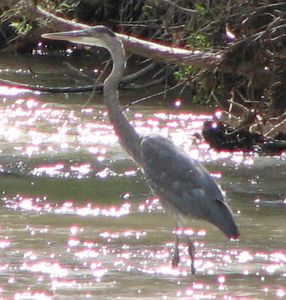
El Bosque
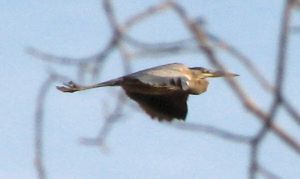
El Bosque
Cathartes aura
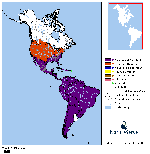
Enlarge Map
External Sites:
Cornell
USGS
Image Search
Majority of residents here by April 1st.
Number of Individuals Observed:7
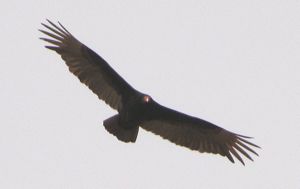
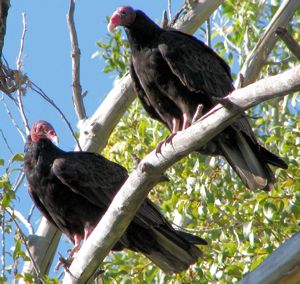
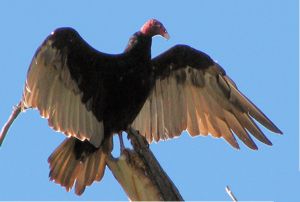
Pandion haliaetus
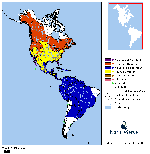
Enlarge Map
External Sites:
Cornell
USGS
Image Search
Number of Individuals Observed:1
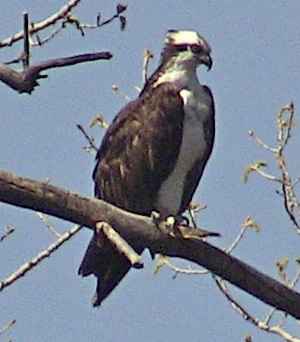
Embudo, April 28, 2013
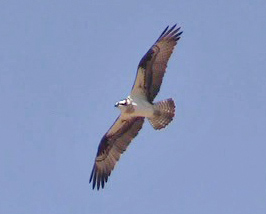
Rinconada April 24, 2013
Actitis macularius
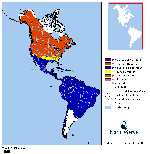
Enlarge Map
External Sites:
Cornell
USGS
Image Search
Number of Individuals Observed:4
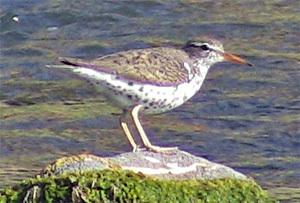
Rinconada, June 5, 2013
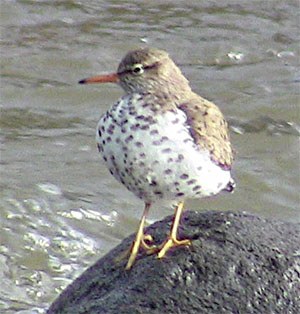
Rinconada, May 8, 2014
Zenaida macroura
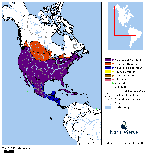
Enlarge Map
External Sites:
Cornell
USGS
Image Search
Note long, pointed tail which shows white edges when landing.
Call is a soft, slow "who-AH, who, who, who" heard during the day. (Commonly mistaken for an owl. Note: Owls usually do not call during daylight hours)
Number of Individuals Observed:6
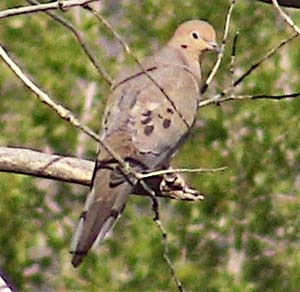
El Bosque
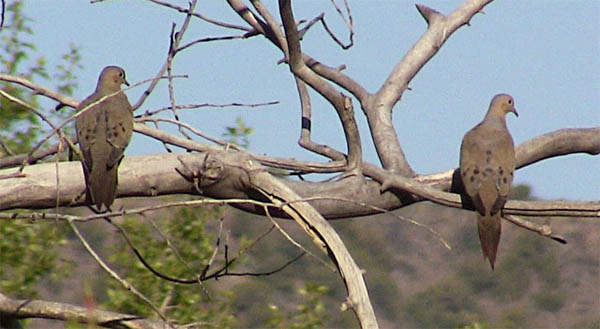
El Bosque
Aeronautes saxatalis
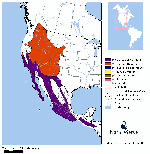
Enlarge Map
External Sites:
Cornell
USGS
Image Search
Number of Individuals Observed:4
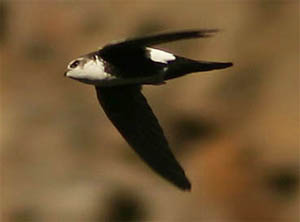
Photo: Michael Woodruff 2006 Spokane County WA
Archilochus alexandri
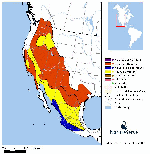
Enlarge Map
External Sites:
Cornell
USGS
Image Search
One of only two hummingbirds that regularly breed here.
In the right light, male's throat shows purple below, black above.
Often appears more slender and vertical than the Broad-tailed Hummingbird.
Male is pictured. Female has plain throat.
Number of Individuals Observed:2
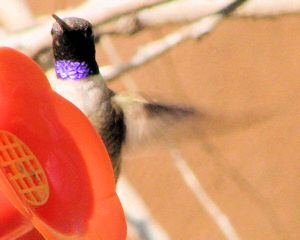
El Bosque
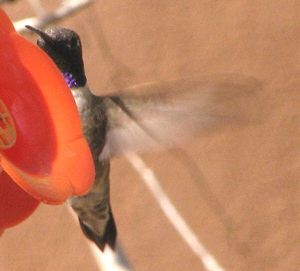
El Bosque
Selasphorus platycercus
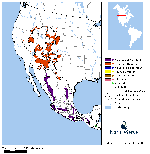
Enlarge Map
External Sites:
Cornell
USGS
Image Search
One of only two hummingbirds that regularly breed here.
In the right light, male's throat is red.
Often appears plumper and rounder than the Black-chinned Hummingbird.
Male's wing make a distinctive, loud buzz in flight.
Male is pictured. Female has plain throat.
Number of Individuals Observed:6
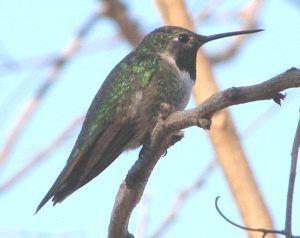
Dixon
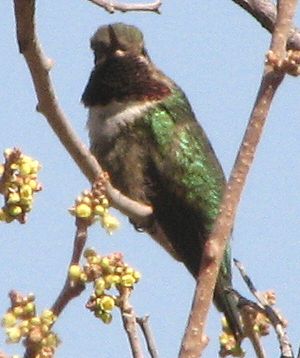
Dixon
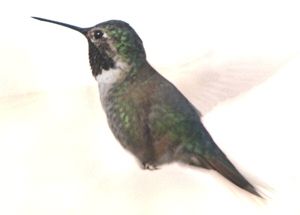
Dixon
Ceryle alcyon
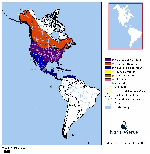
Enlarge Map
External Sites:
Cornell
USGS
Image Search
Gives a distinctive long, loud rattle in flight.
Male has gray breast band. Female has additional rufous band below.
Number of Individuals Observed:1
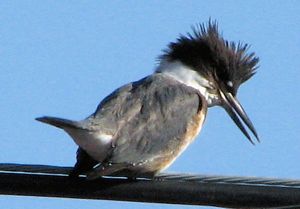
El Bosque
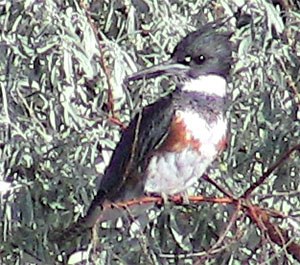
Rinconada
Empidonax wrightii
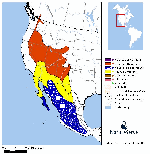
Enlarge Map
External Sites:
Cornell
USGS
Image Search
Number of Individuals Observed:1
Empidonax
External Sites:
Cornell
USGS
Image Search
Number of Individuals Observed:4
Sayornis nigricans
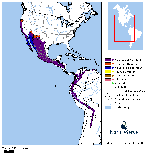
Enlarge Map
External Sites:
Cornell
USGS
Image Search
Usually seen on low branches overhanging the river, from which it "hawks" insects.
At times perches at mid-level in trees near the river, making its sharp, quick two-note call.
Distinctive inverted "v" apparent where the white belly meets the dark breast.
Number of Individuals Observed:3
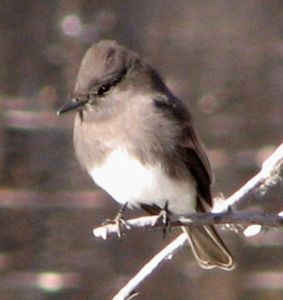
Cachanillas (Velarde)
Sayornis saya
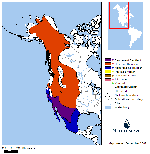
Enlarge Map
External Sites:
Cornell
USGS
Image Search
Usually seen on posts or single stalk plants in agricutural areas "hawking" insects.
It's call is a slow, plaintive, downward slurred "pee-ee". At close range, may hear "pit,pee-ee".
Distinctive peach-colored belly.
This species regularly builds nests under people's portales.
Number of Individuals Observed:2
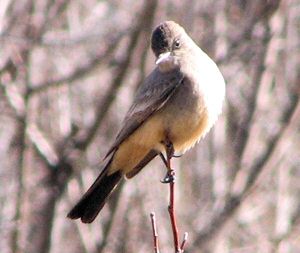
Rinconada
Myiarchus cinerascens
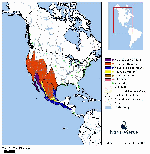
Enlarge Map
External Sites:
Cornell
USGS
Image Search
Number of Individuals Observed:2
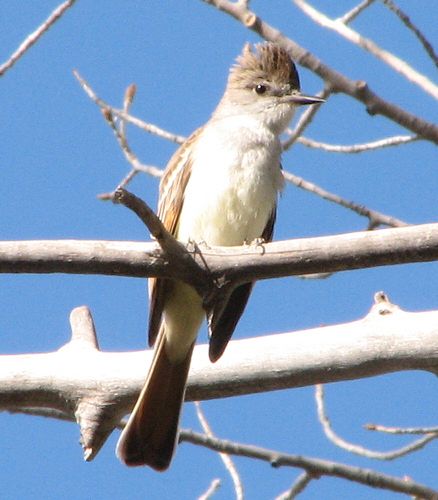
El Bosque
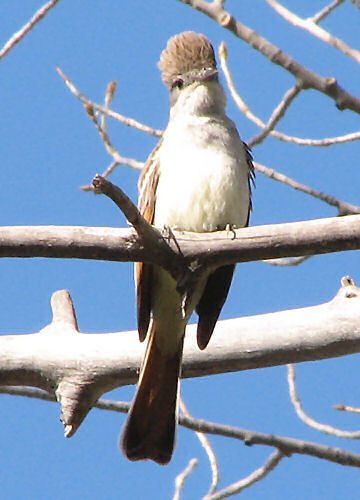
El Bosque
Tyrannus vociferans
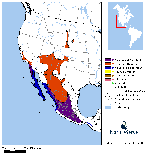
Enlarge Map
External Sites:
Cornell
USGS
Image Search
Individuals begin arriving in this area by mid-April. Some pass through to places further north, but many breed here during the summer. They begin moving south to their wintering grounds in early Fall.
This species is very noisy making a variety of sounds including its signature, exuberant: "Chi-beer!"
Number of Individuals Observed:3
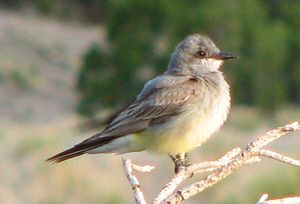
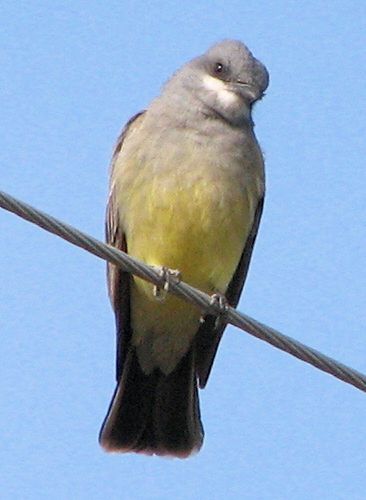
Vireo plumbeus
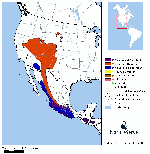
Enlarge Map
External Sites:
Cornell
USGS
Image Search
Number of Individuals Observed:2
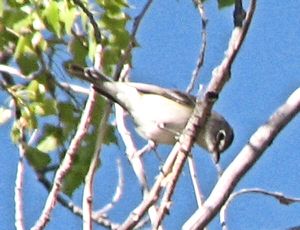
Rio Ojo Sarco
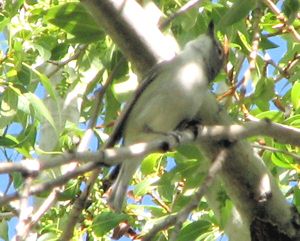
Rio Ojo Sarco
Vireo gilvus
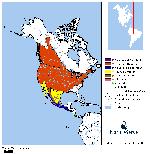
Enlarge Map
External Sites:
Cornell
USGS
Image Search
Number of Individuals Observed:3
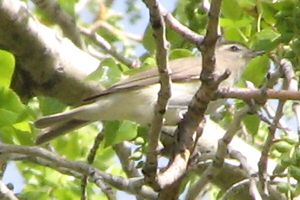
Aphelocoma californica
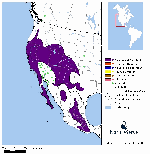
Enlarge Map
External Sites:
Cornell
USGS
Image Search
Note white throat and faint white eyebrow.
Also brownish-gray back.
Distinguished from the Pinyon Jay by longer tail and solitary behavior.
Number of Individuals Observed:1
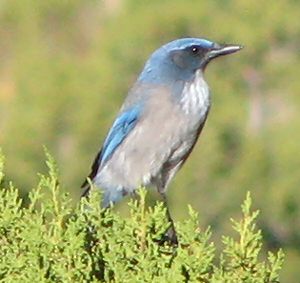
Arroyo la Mina
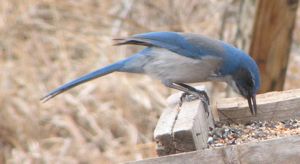
Cañoncito
Gymnorhinus cyanocephalus
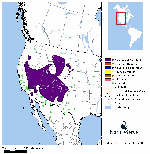
Enlarge Map
External Sites:
Cornell
USGS
Image Search
Flocks feed in harvested corn fields or on Piñon-Juniper Hillsides
Generally in flocks of 30-70 individuals.
Distinguished from Western Scrub-jay by shorter tail and by flocking behavior.
Number of Individuals Observed:3
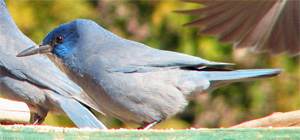
Apodaca
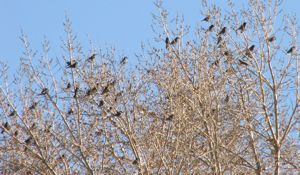
Apodaca
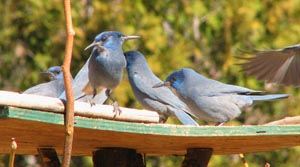
Apodaca
Tachycineta thalassina
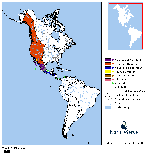
Enlarge Map
External Sites:
Cornell
USGS
Image Search
All white below, with white wrapping up the sides of the rump as shown in the upper individual in the lower photo.
In right light, the back reveals brilliant violet and green colors.
Number of Individuals Observed:86
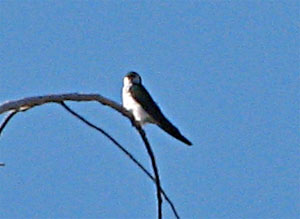
El Bosque
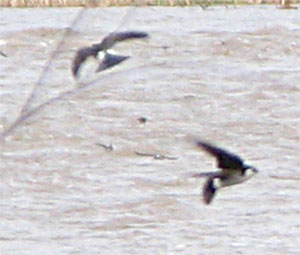
Rinconada
Stelgidopteryx serripennis
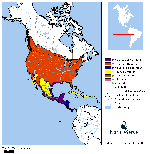
Enlarge Map
External Sites:
Cornell
USGS
Image Search
Number of Individuals Observed:4
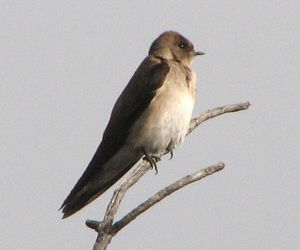
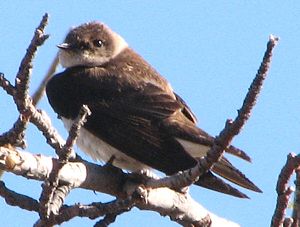
Hirundo rustica
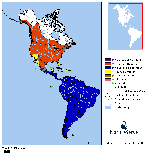
Enlarge Map
External Sites:
Cornell
USGS
Image Search
Number of Individuals Observed:3

Peñasco
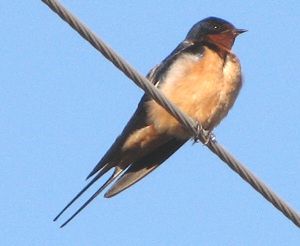
Peñasco
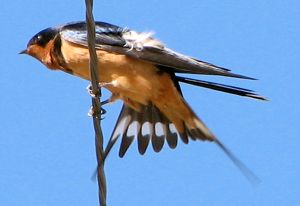
Peñasco
Poecile atricapillus
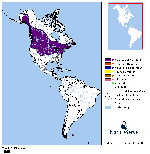
Enlarge Map
External Sites:
Cornell
USGS
Image Search
During breeding season, gives a high descending two pitched
fee-bee.
Number of Individuals Observed:3
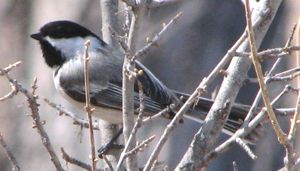
El Bosque
Psaltriparus minimus
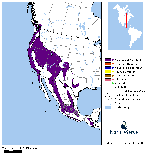
Enlarge Map
External Sites:
Cornell
USGS
Image Search
Usually travels in groups of 10-20 individuals, constantly moving from bush to bush feeding.
Flocking birds constantly make varied twittering sounds.
Number of Individuals Observed:11
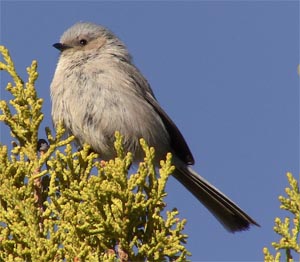
Camino Lejo, Santa Fe
Salpinctes obsoletus
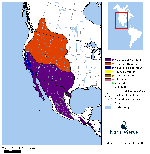
Enlarge Map
External Sites:
Cornell
USGS
Image Search
Number of Individuals Observed:9
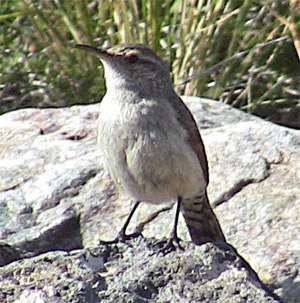
Rio Ojo Sarco, May 17, 2014
Catherpes mexicanus
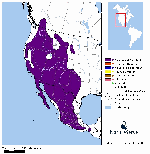
Enlarge Map
External Sites:
Cornell
USGS
Image Search
Usually sings from rock perches high on canyon walls. Occasionally seen in riparian areas sounding its very bright, shrill, trilled "breet".
Note: White throat with rufous belly.
Number of Individuals Observed:4
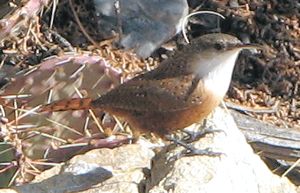
Near Harding Mine
Troglodytes aedon
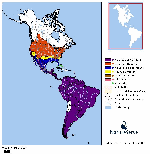
Enlarge Map
External Sites:
Cornell
USGS
Image Search
Number of Individuals Observed:2
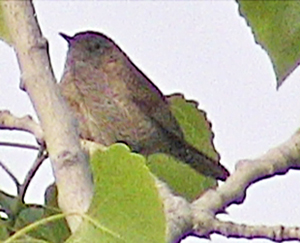
Embudo, May 21, 2014
Cinclus mexicanus
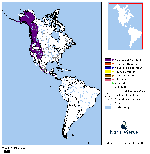
Enlarge Map
External Sites:
Cornell
USGS
Image Search
Often standing on rocks right at the water level, bobbing by bending its knees.
Feeds by walking on the bottom of the stream.
Number of Individuals Observed:2

El Bosque
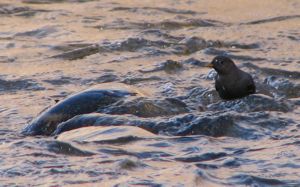
See Slide Show of Dipper Feeding
Polioptila caerulea

Enlarge Map
External Sites:
Cornell
USGS
Image Search
Number of Individuals Observed:5
Myadestes townsendi
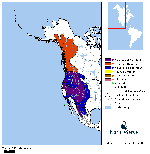
Enlarge Map
External Sites:
Cornell
USGS
Image Search
Gray all over with white on sides of tail.
Fluttery in flight, with cream-colored bands running the length of each wing on the underside.
Number of Individuals Observed:1
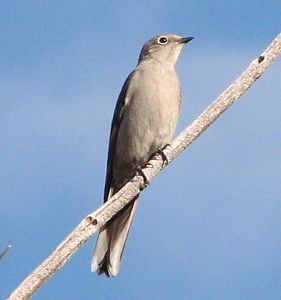
Harding Mine
Catharus guttatus
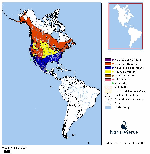
Enlarge Map
External Sites:
Cornell
USGS
Image Search
Number of Individuals Observed:2
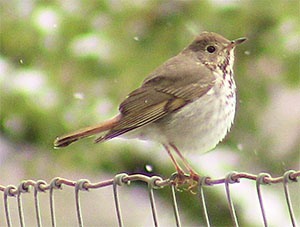
Rinconada Enlarge
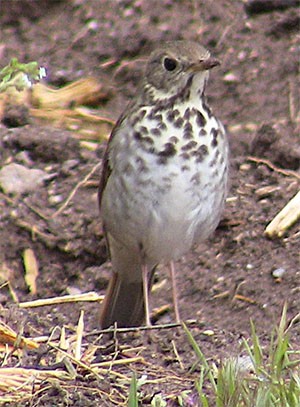
Rinconada Enlarge
Turdus migratorius
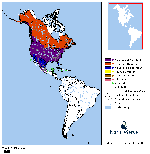
Enlarge Map
External Sites:
Cornell
USGS
Image Search
Note reddish breast, light colored bill and large white split eye-ring.
Number of Individuals Observed:8
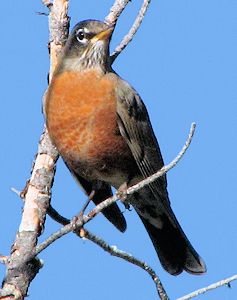
El Bosque
Vermivora celata
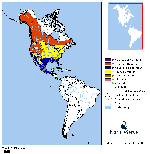
Enlarge Map
External Sites:
Cornell
USGS
Image Search
Number of Individuals Observed:7
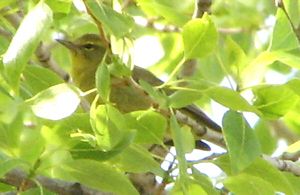
Dixon
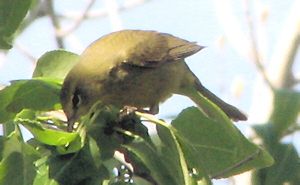
Dixon
Vermivora virginiae
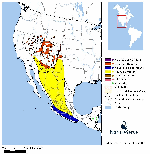
Enlarge Map
External Sites:
Cornell
USGS
Image Search
Number of Individuals Observed:4
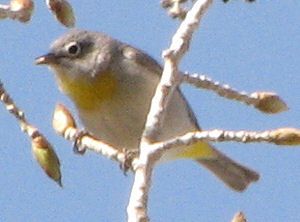
Ojo Sarco
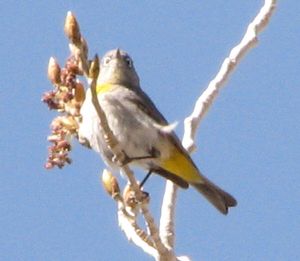
Ojo Sarco
Dendroica petechia
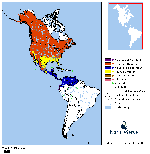
Enlarge Map
External Sites:
Cornell
USGS
Image Search
Number of Individuals Observed:11
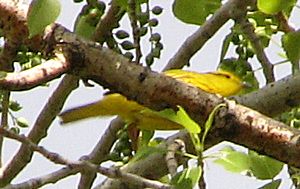
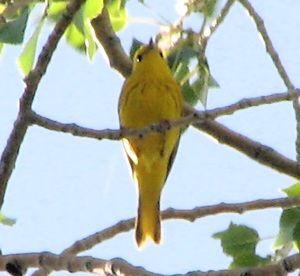
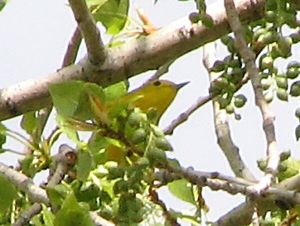
Dendroica coronata
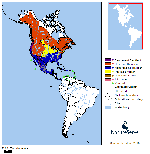
Enlarge Map
External Sites:
Cornell
USGS
Image Search
The first two pictures show breeding plumage.
The last shows typical winter plumage.
Number of Individuals Observed:60
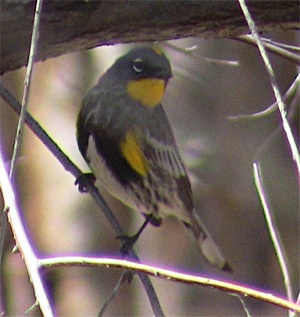
La Junta, April 28, 2013
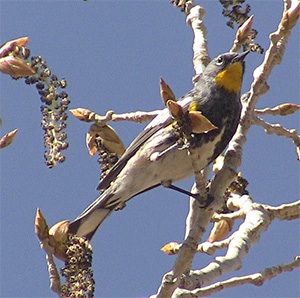
La Junta, April 28, 2013
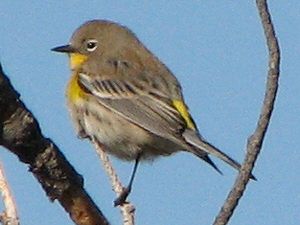
Apodaca
Wilsonia pusilla
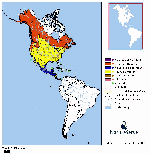
Enlarge Map
External Sites:
Cornell
USGS
Image Search
Number of Individuals Observed:2
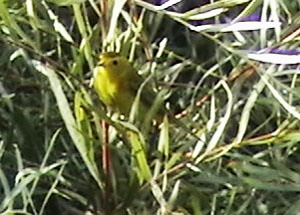
Dixon
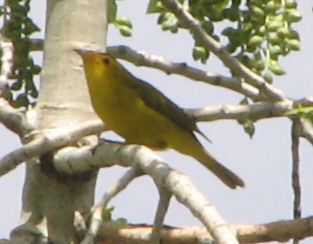
Dixon
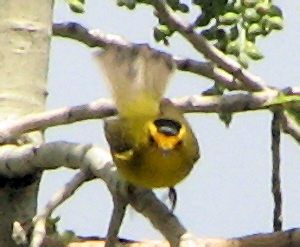
Dixon
Icteria virens
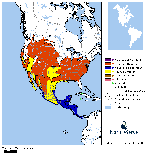
Enlarge Map
External Sites:
Cornell
USGS
Image Search
Number of Individuals Observed:5
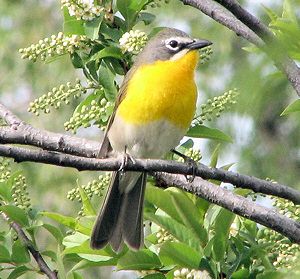
El Bosque
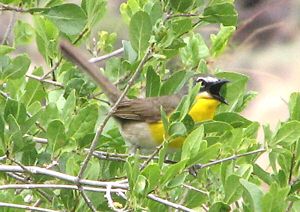
El Bosque
Piranga ludoviciana
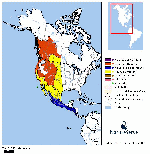
Enlarge Map
External Sites:
Cornell
USGS
Image Search
Middle Photo: Female
Bottom Photo: Male in Flight
Number of Individuals Observed:4
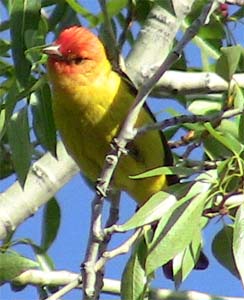
Dixon
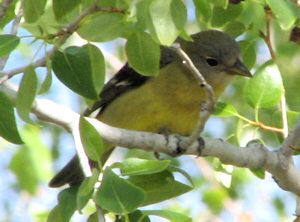
Dixon
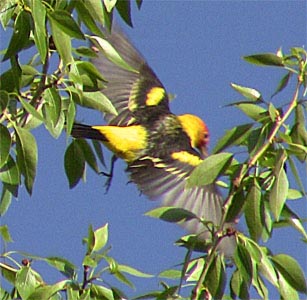
Dixon
Pipilo maculatus
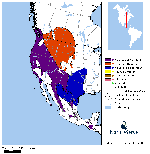
Enlarge Map
External Sites:
Cornell
USGS
Image Search
Occasionally you will see one at the edge of the road or briefly flying from one shrub to the next.
However, they regularly produce a contact call, a low growl.
Hear Contact Call
If you listen for that call and follow it, may be rewarded with a view of this lovely bird with a red eye.
Note white breast with rufous (reddish) flanks.
Lower Photo shows bird in its preferred habitat.
Number of Individuals Observed:10
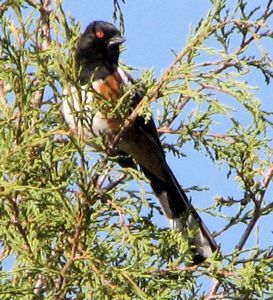
Arroyo la Mina
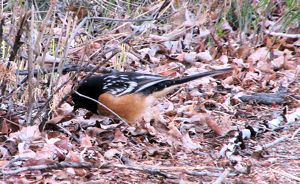
El Bosque Enlarge
Spizella passerina
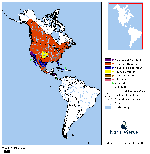
Enlarge Map
External Sites:
Cornell
USGS
Image Search
Number of Individuals Observed:75
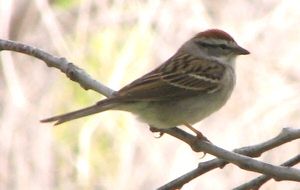
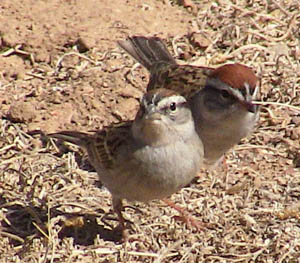
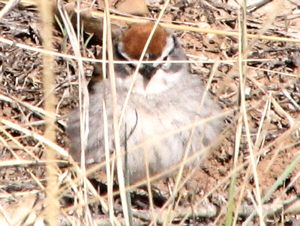
Chondestes grammacus
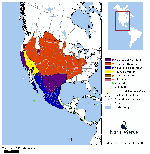
Enlarge Map
External Sites:
Cornell
USGS
Image Search
Number of Individuals Observed:7
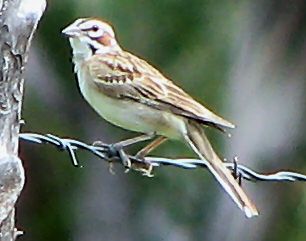
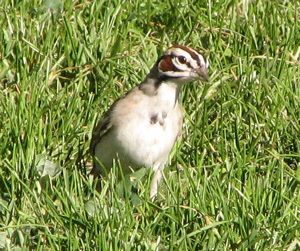
Zonotrichia leucophrys
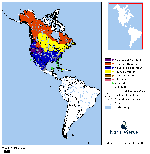
Enlarge Map
External Sites:
Cornell
USGS
Image Search
Juvenile (Lower Photo): Head stripes brown and gray.
Number of Individuals Observed:3
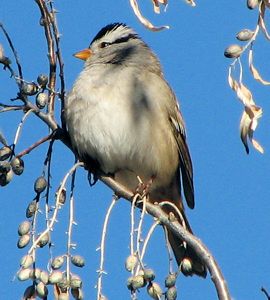
Dixon
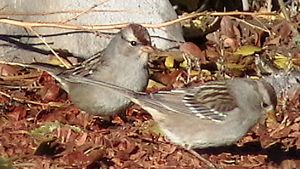
Dixon
Pheucticus melanocephalus
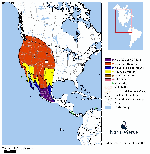
Enlarge Map
External Sites:
Cornell
USGS
Image Search
Number of Individuals Observed:5
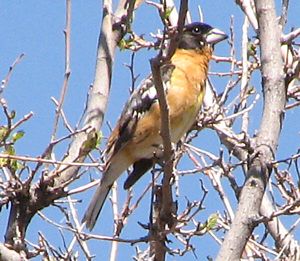
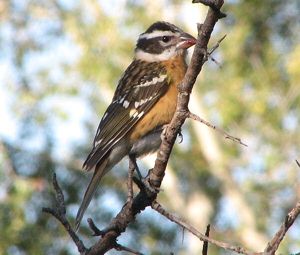
Agelaius phoeniceus
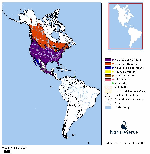
Enlarge Map
External Sites:
Cornell
USGS
Image Search
Male (Lower Picture) is black with red patches on shoulders. Outside of breeding times, the red may be hidden.
Both sexes have medium length, very pointed bill.
Number of Individuals Observed:11
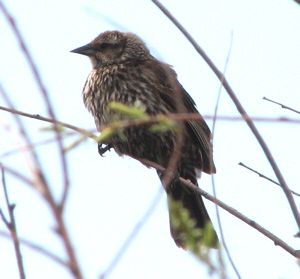
Baca Park, Taos
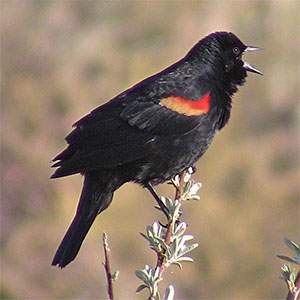
Rinconada Enlarge
Euphagus cyanocephalus
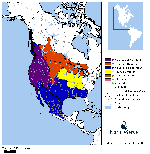
Enlarge Map
External Sites:
Cornell
USGS
Image Search
Number of Individuals Observed:5
Molothrus ater
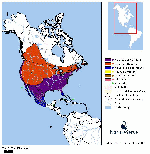
Enlarge Map
External Sites:
Cornell
USGS
Image Search
Number of Individuals Observed:3
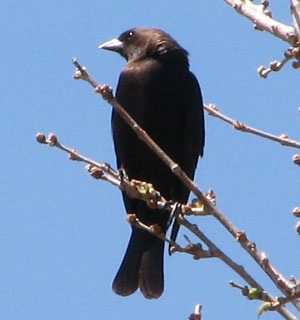
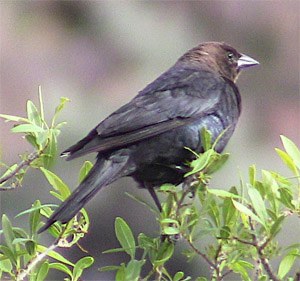
Orilla Verde, May 7, 2014 Enlarge
Icterus bullockii
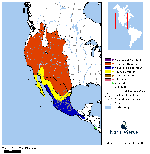
Enlarge Map
External Sites:
Cornell
USGS
Image Search
Number of Individuals Observed:6
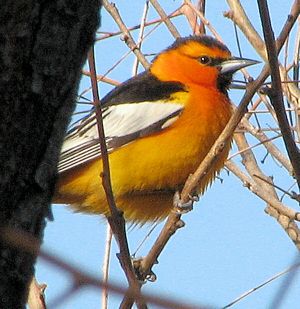
El Bosque
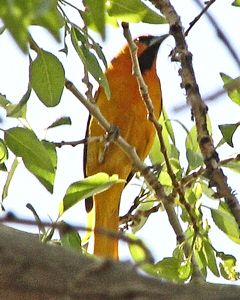
El Bosque
Carpodacus mexicanus
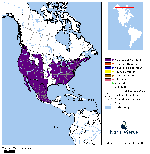
Enlarge Map
External Sites:
Cornell
USGS
Image Search
Male (upper picture) is easily identified by red plumage on head, throat, breast and rump.
Female (lower photo) does not have red.
Both sexes have streaking on breast, belly and flanks.
Number of Individuals Observed:8
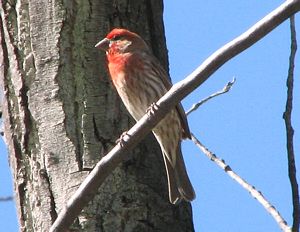
Arroyo La Mina
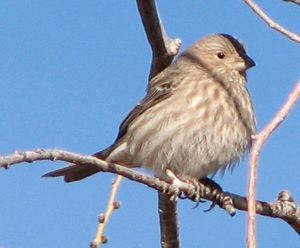
Arroyo La Mina
